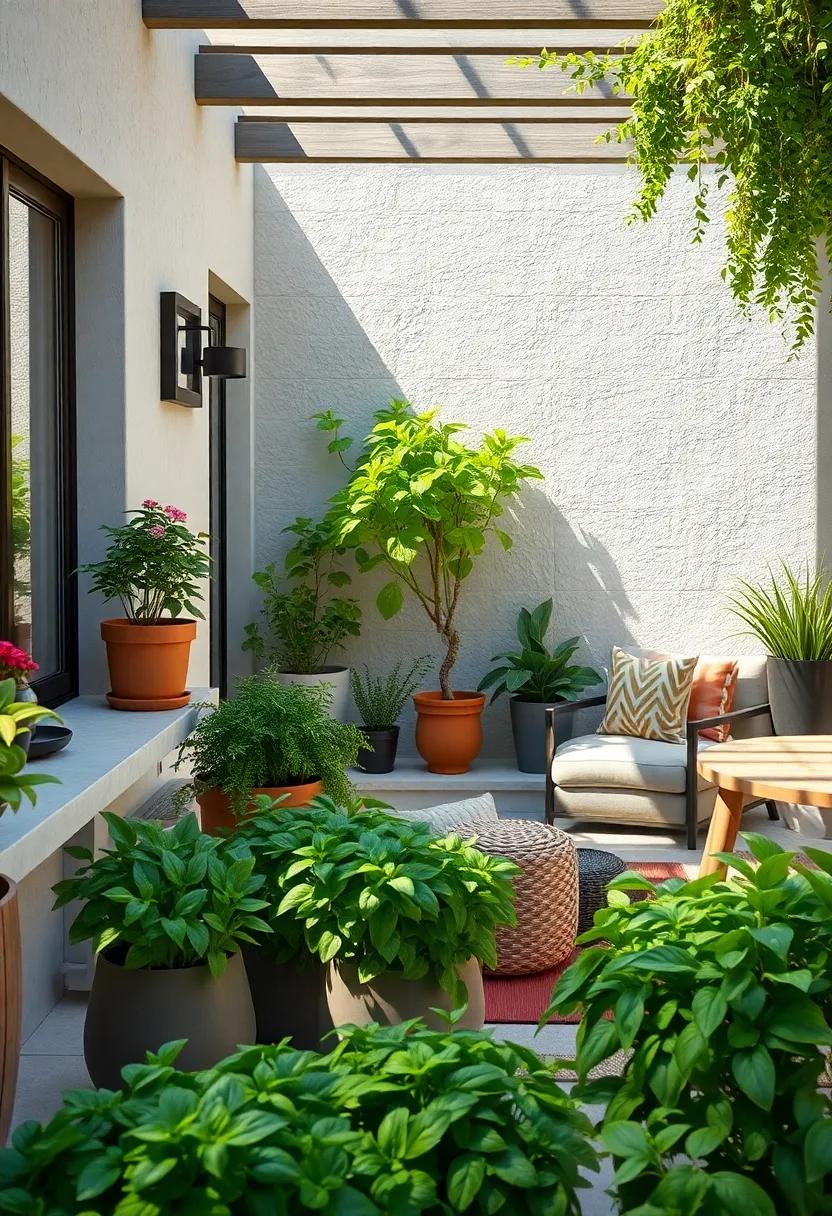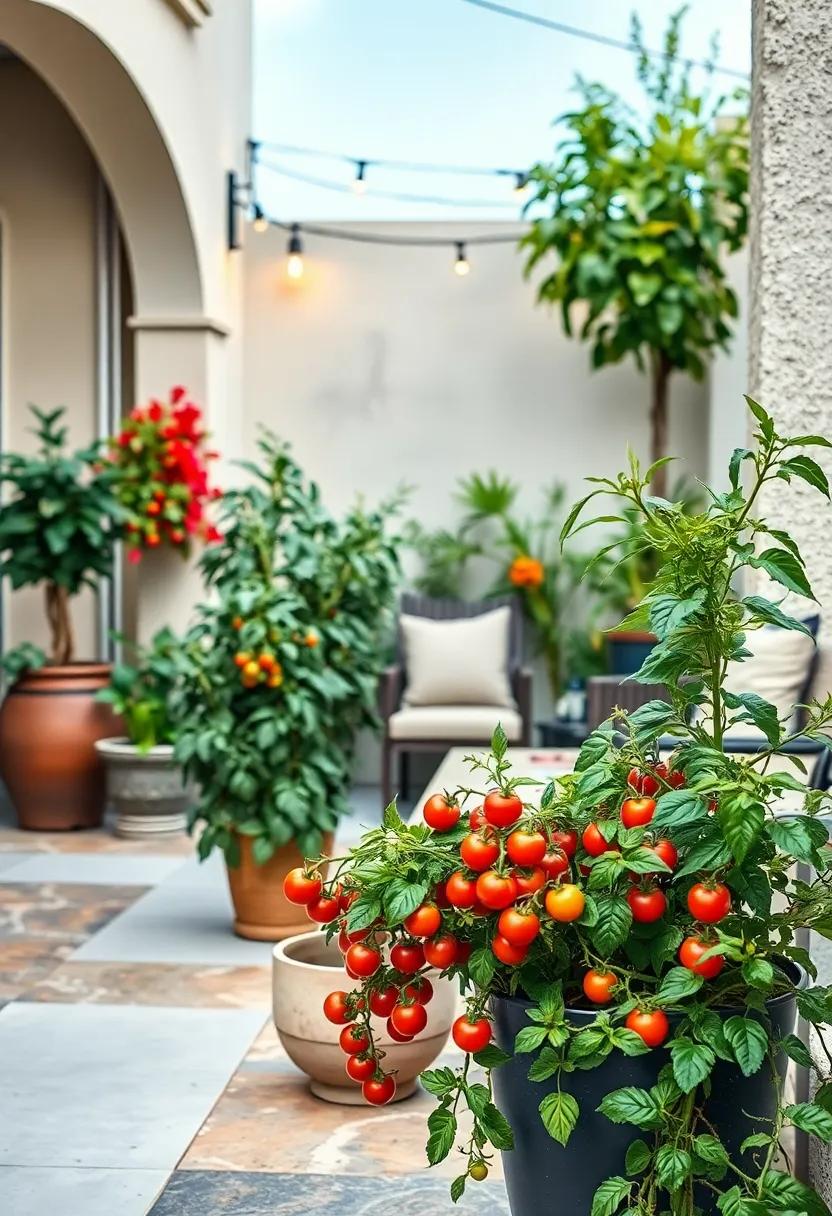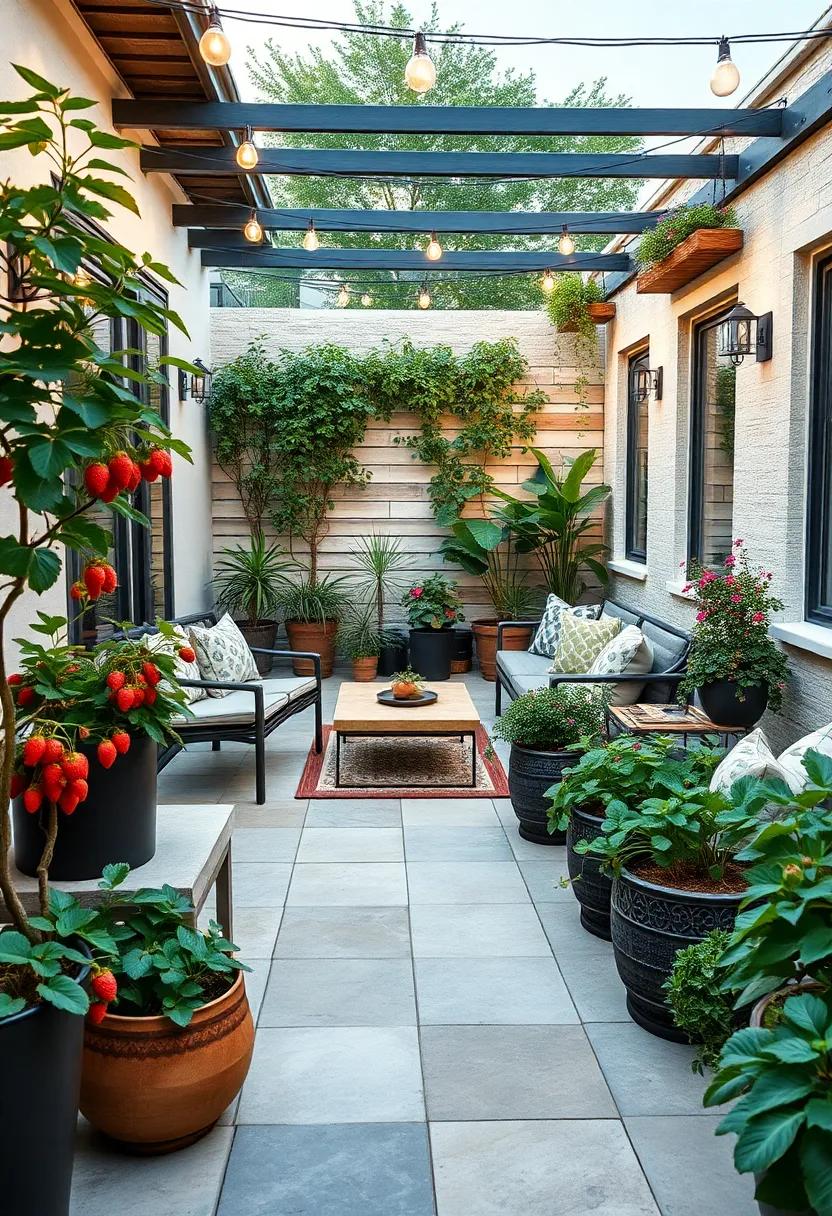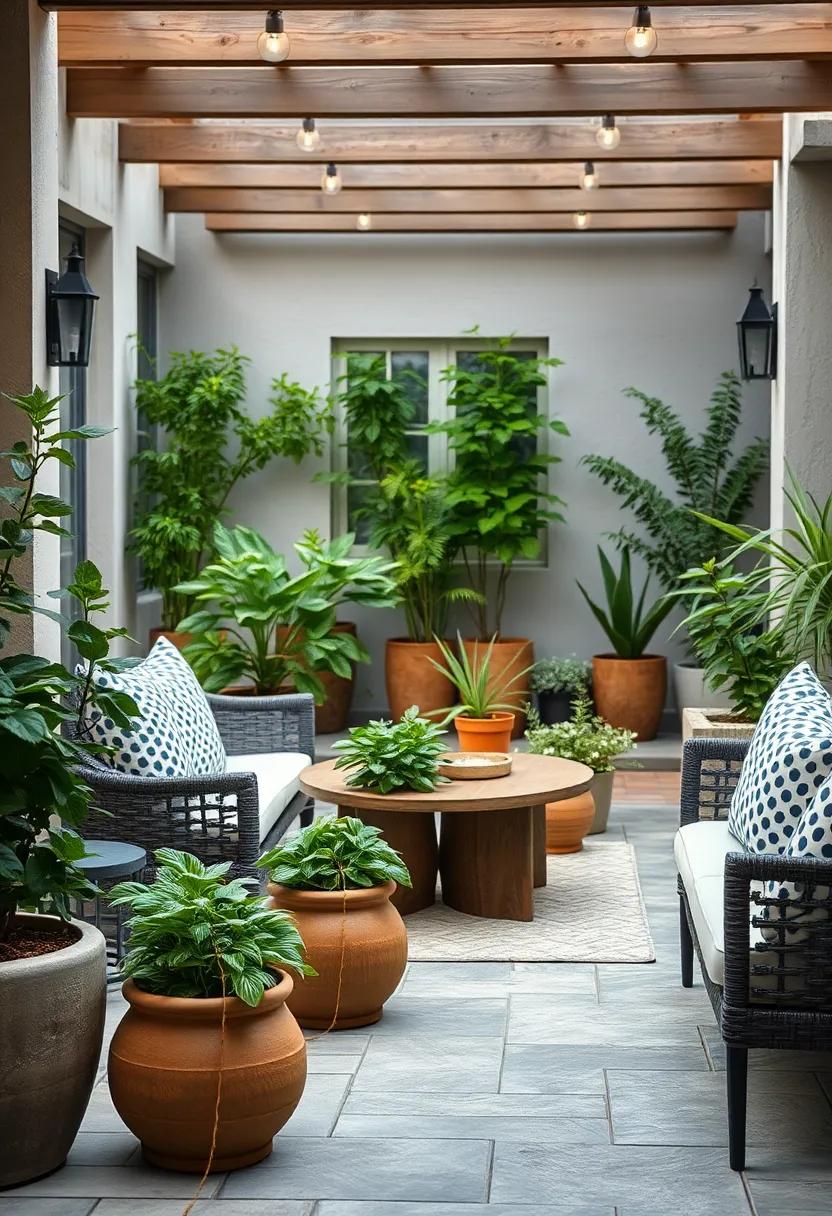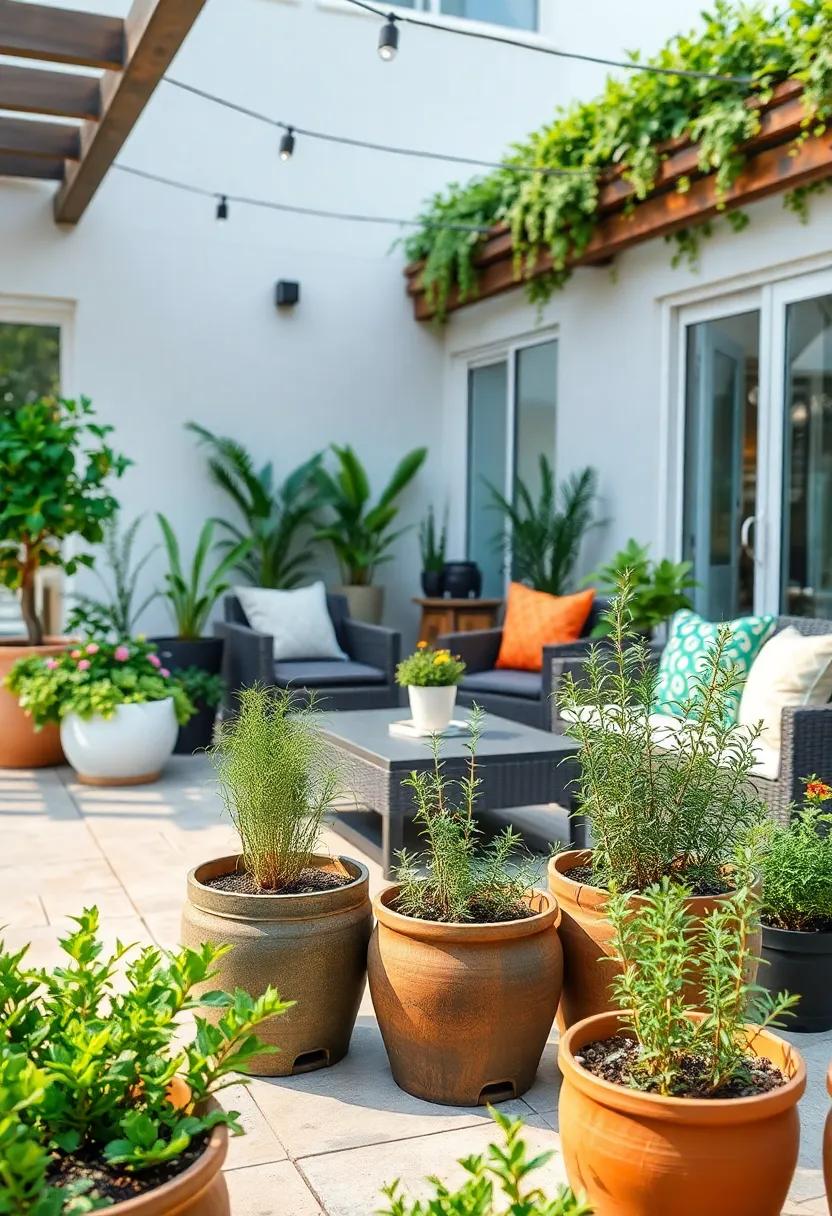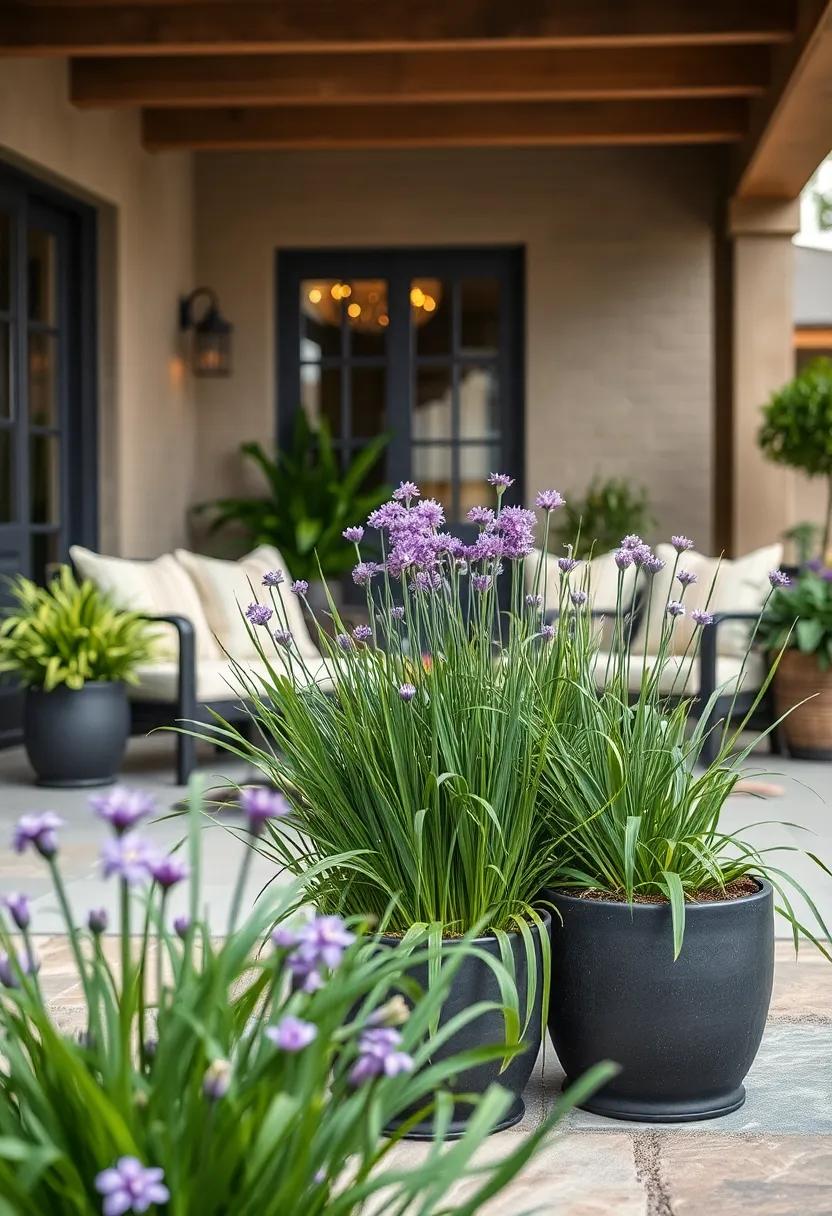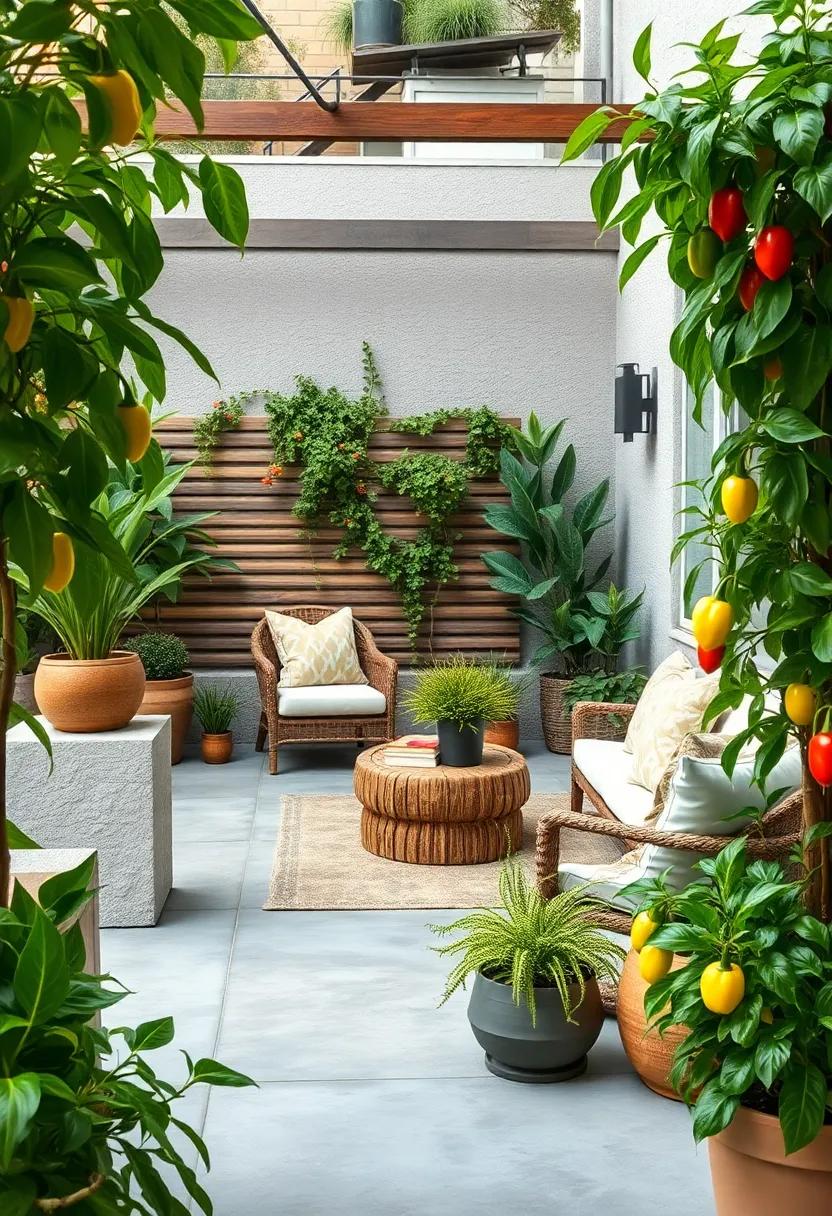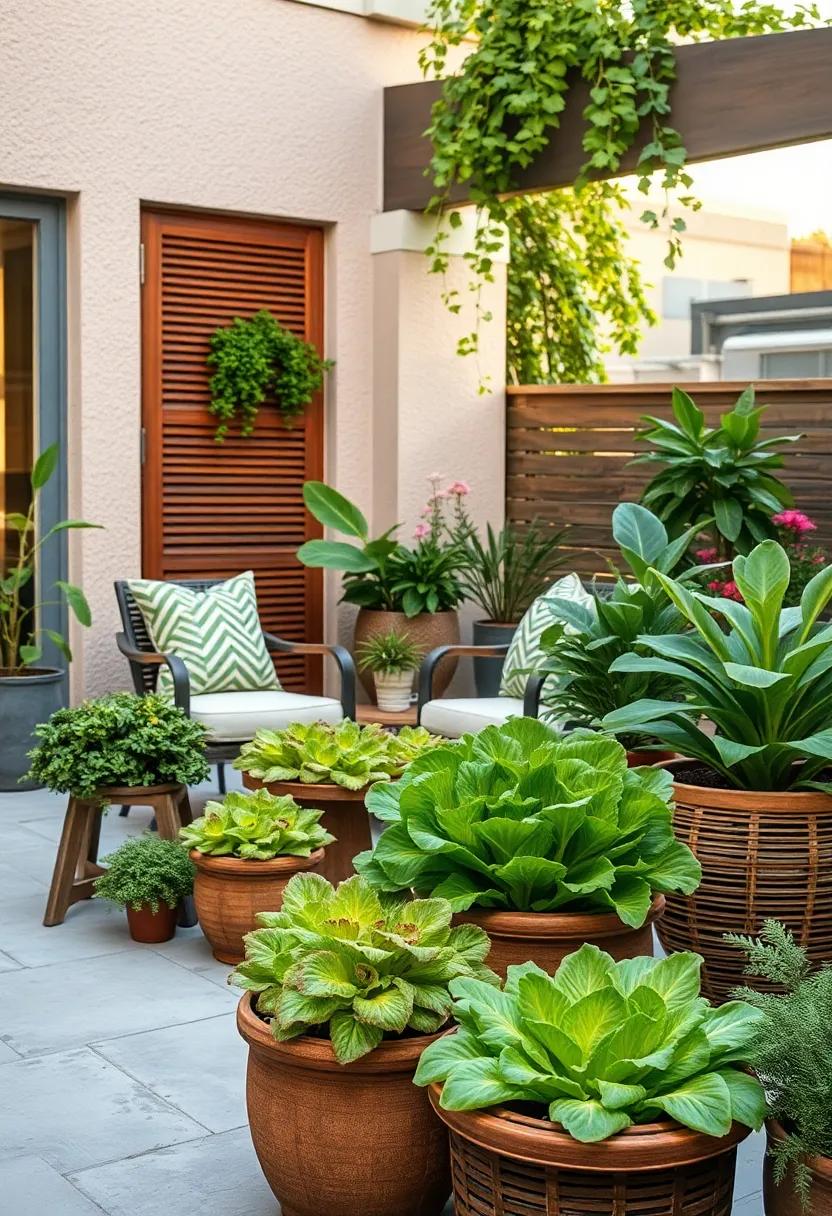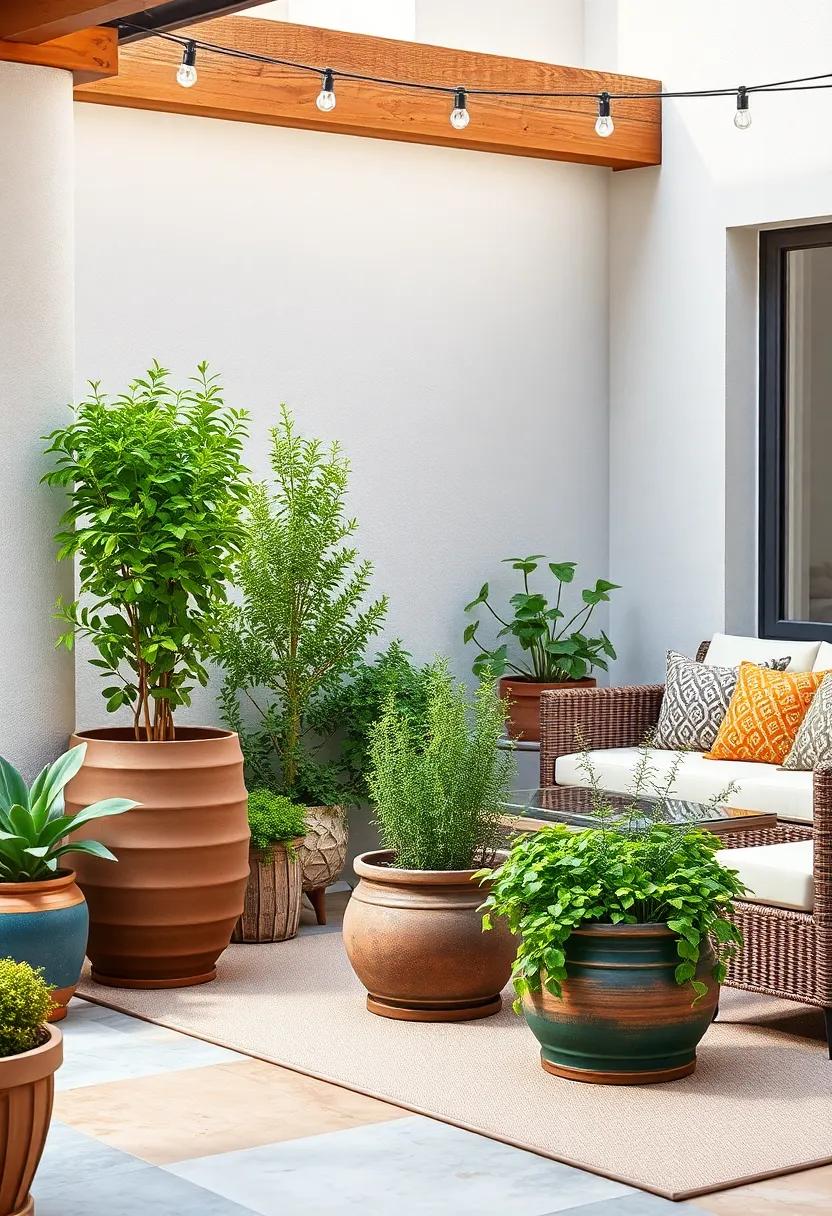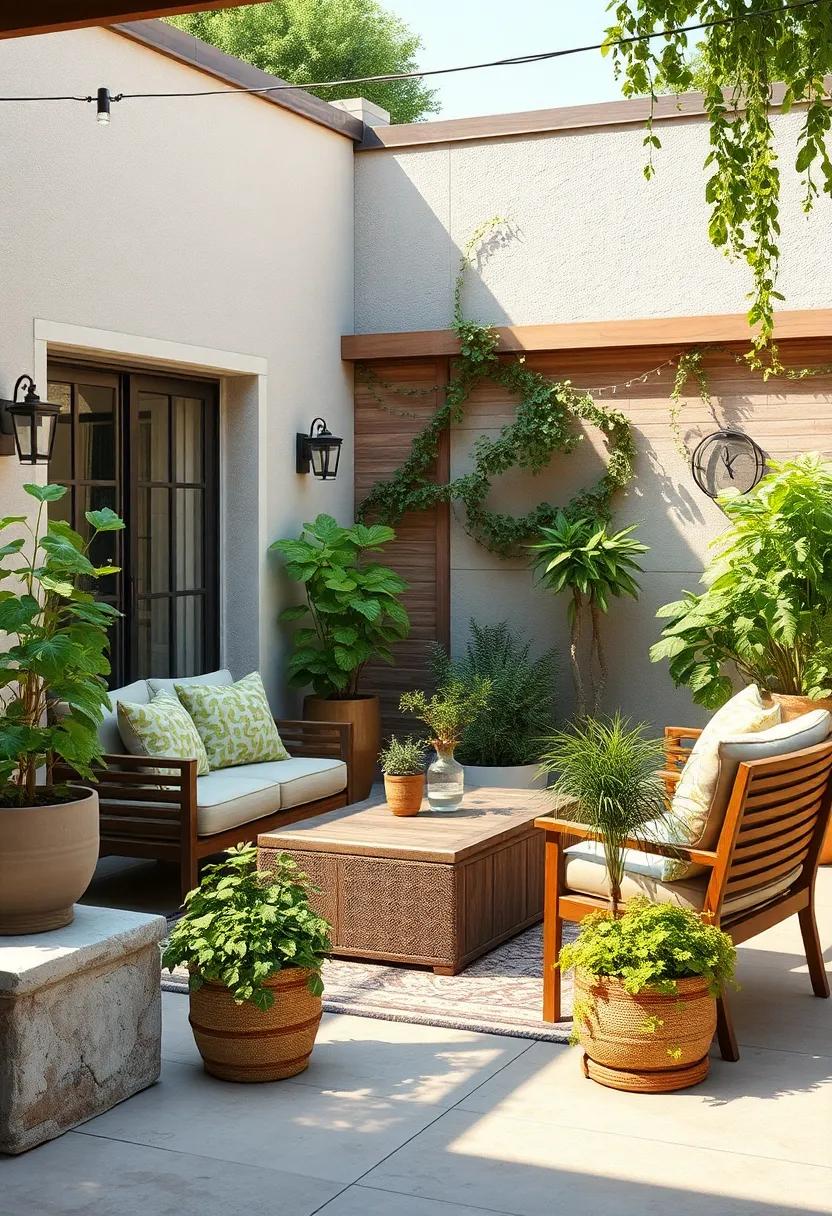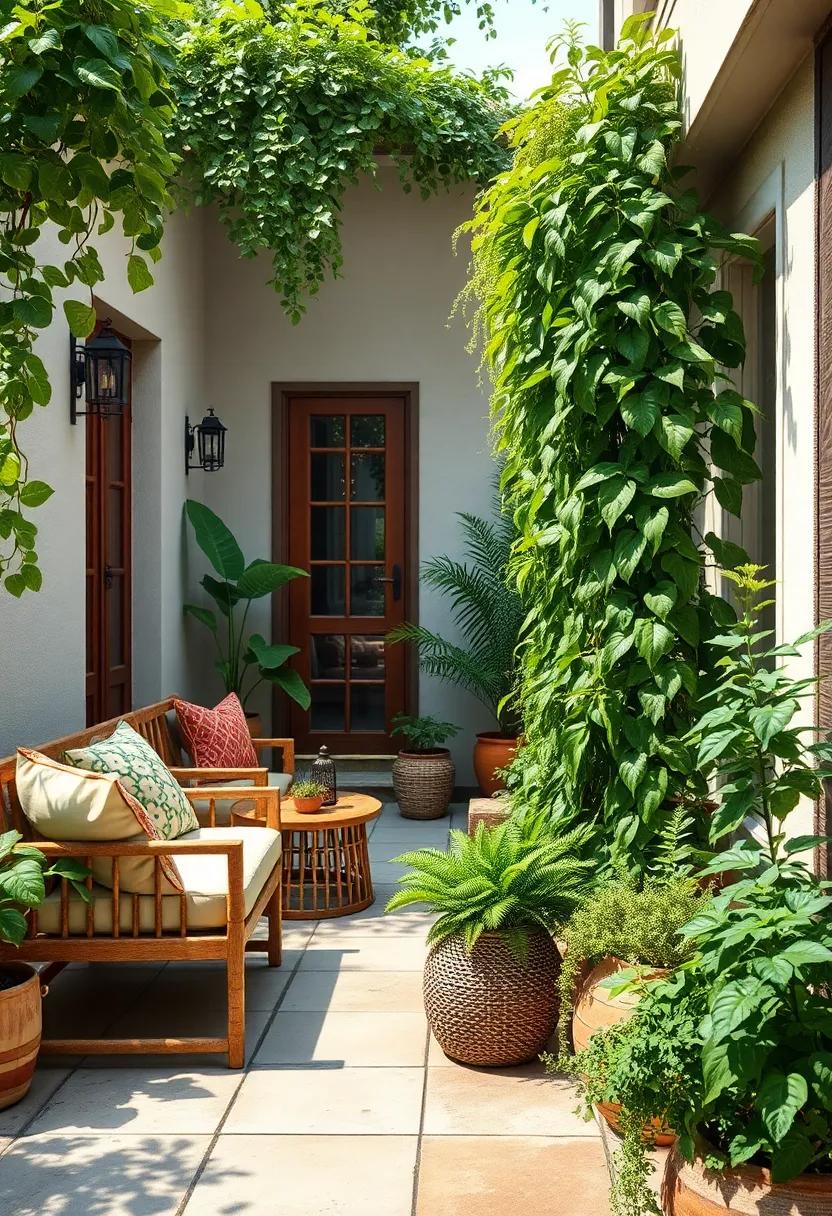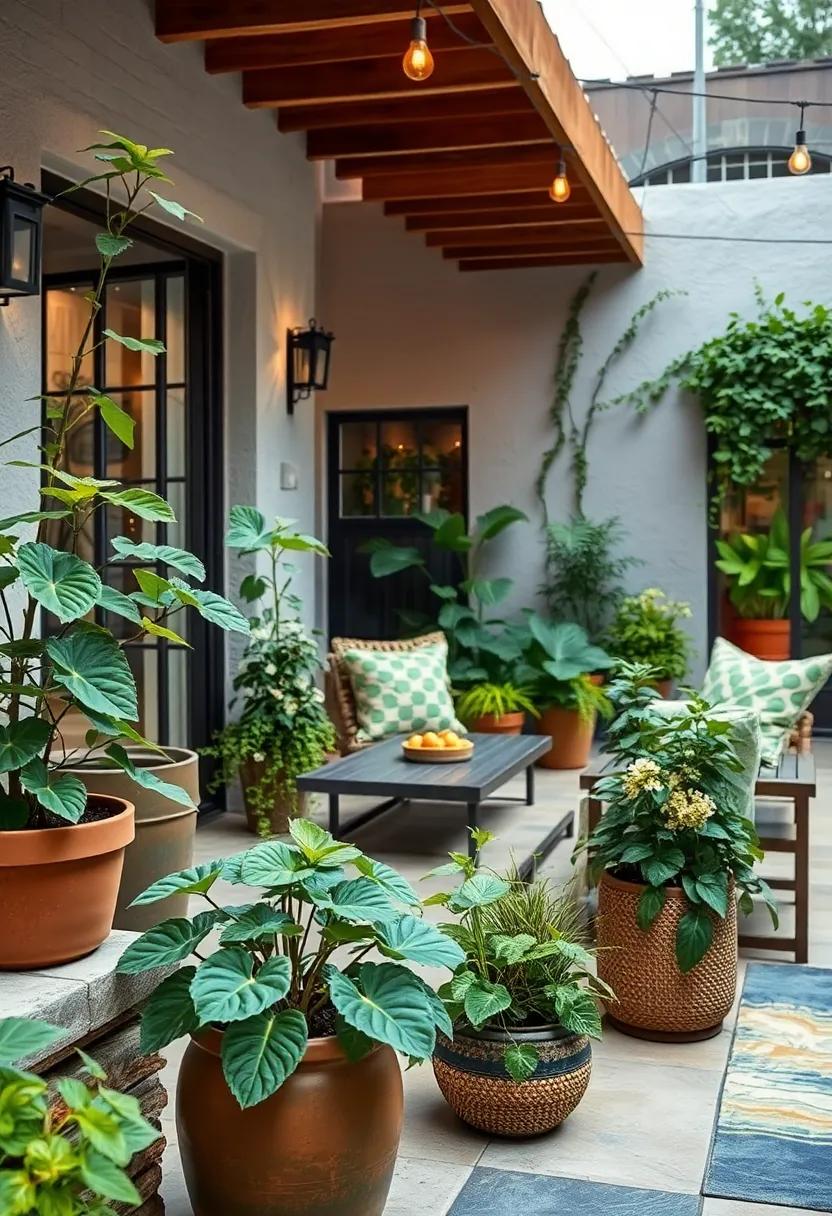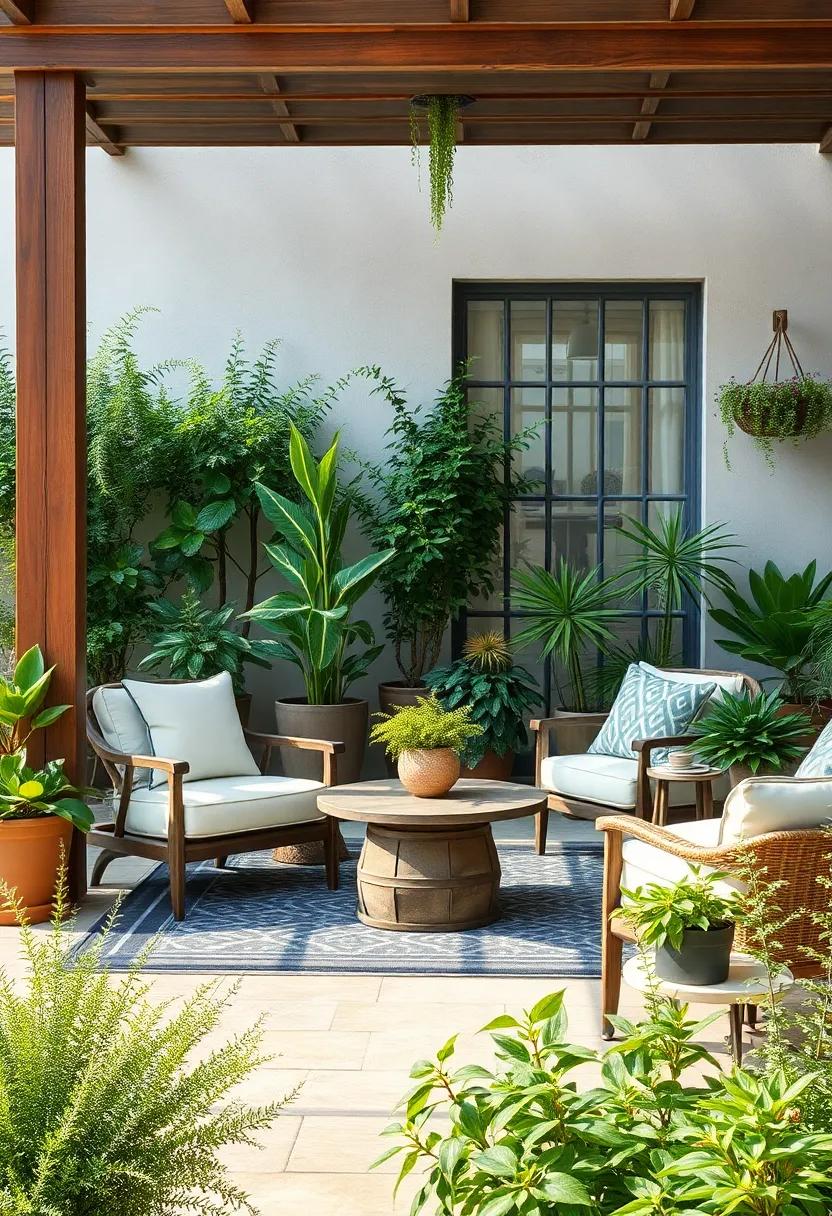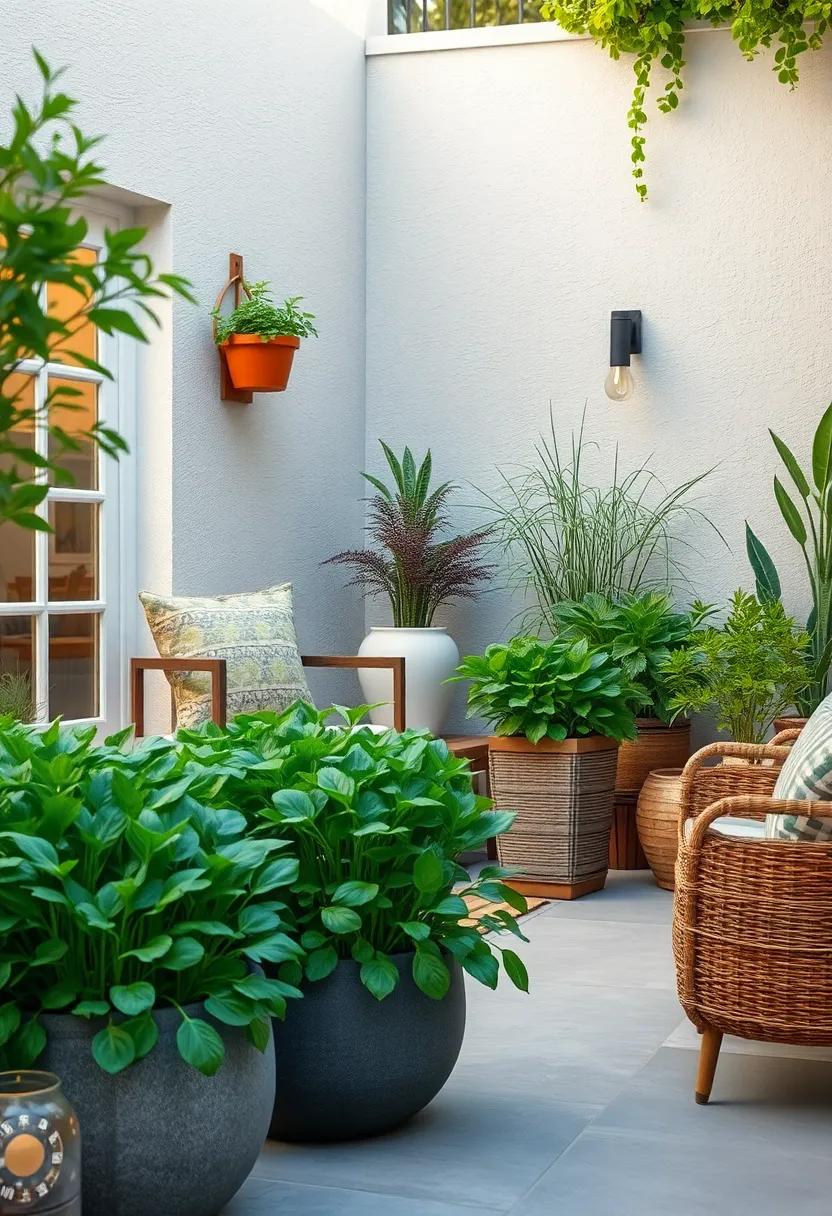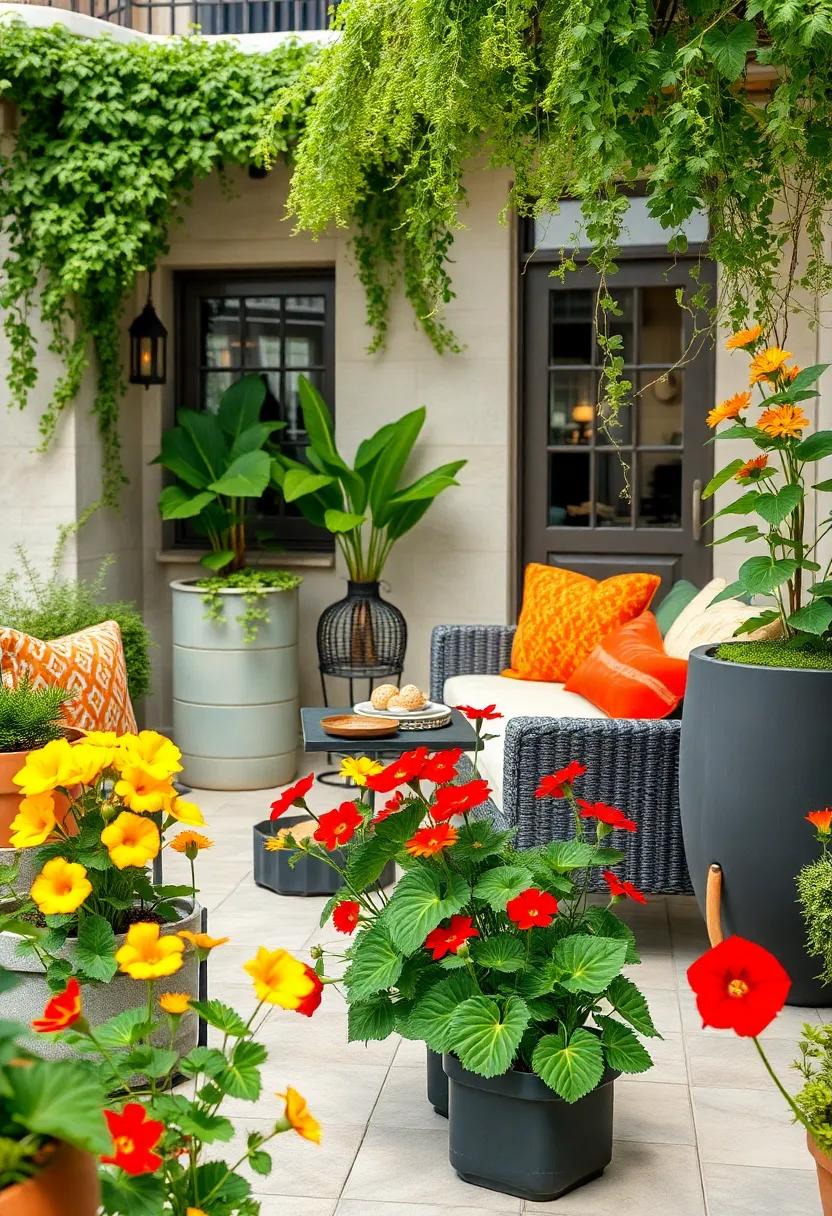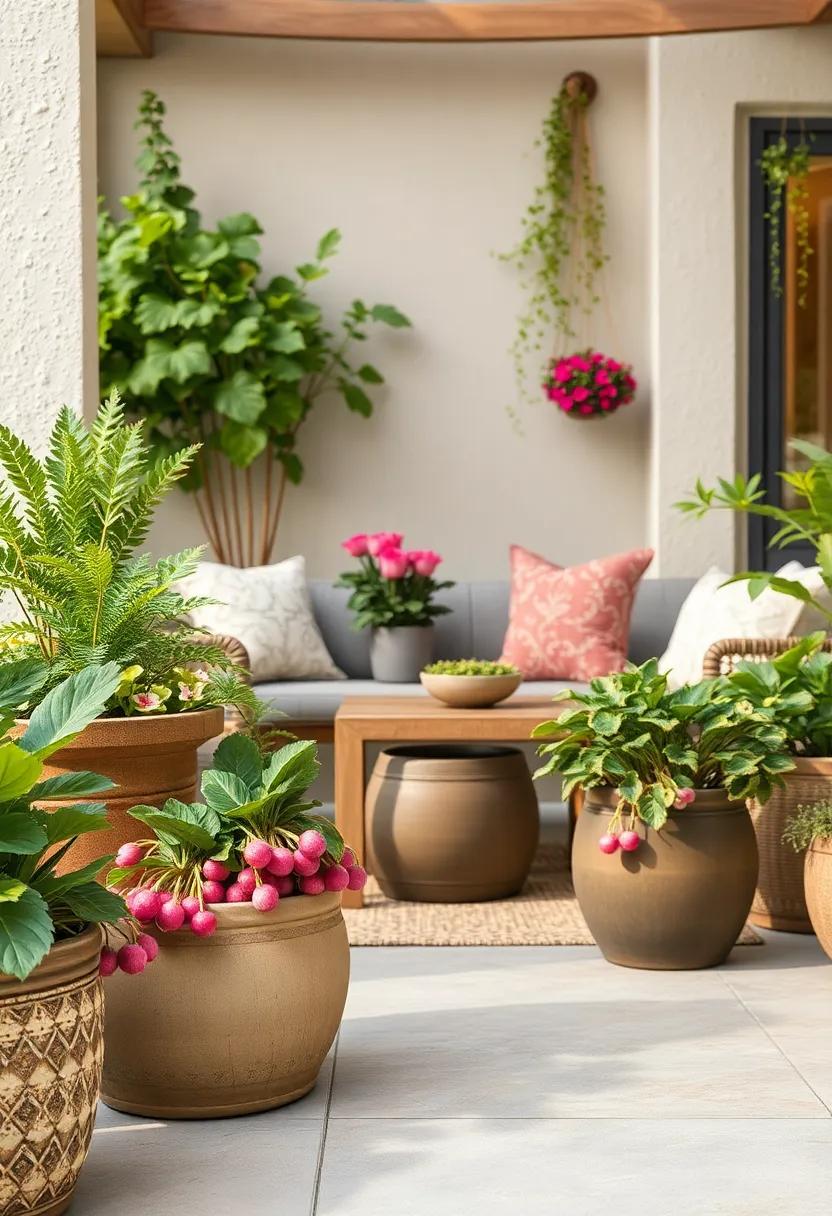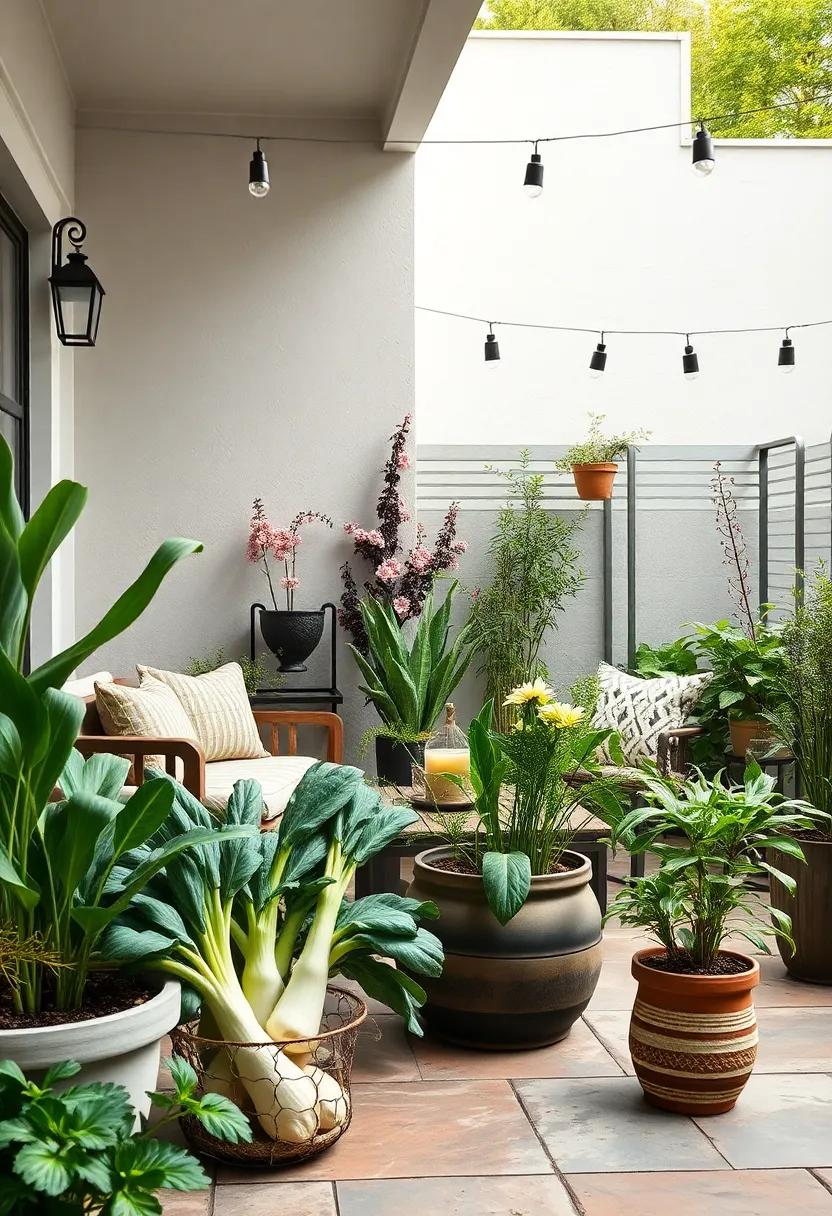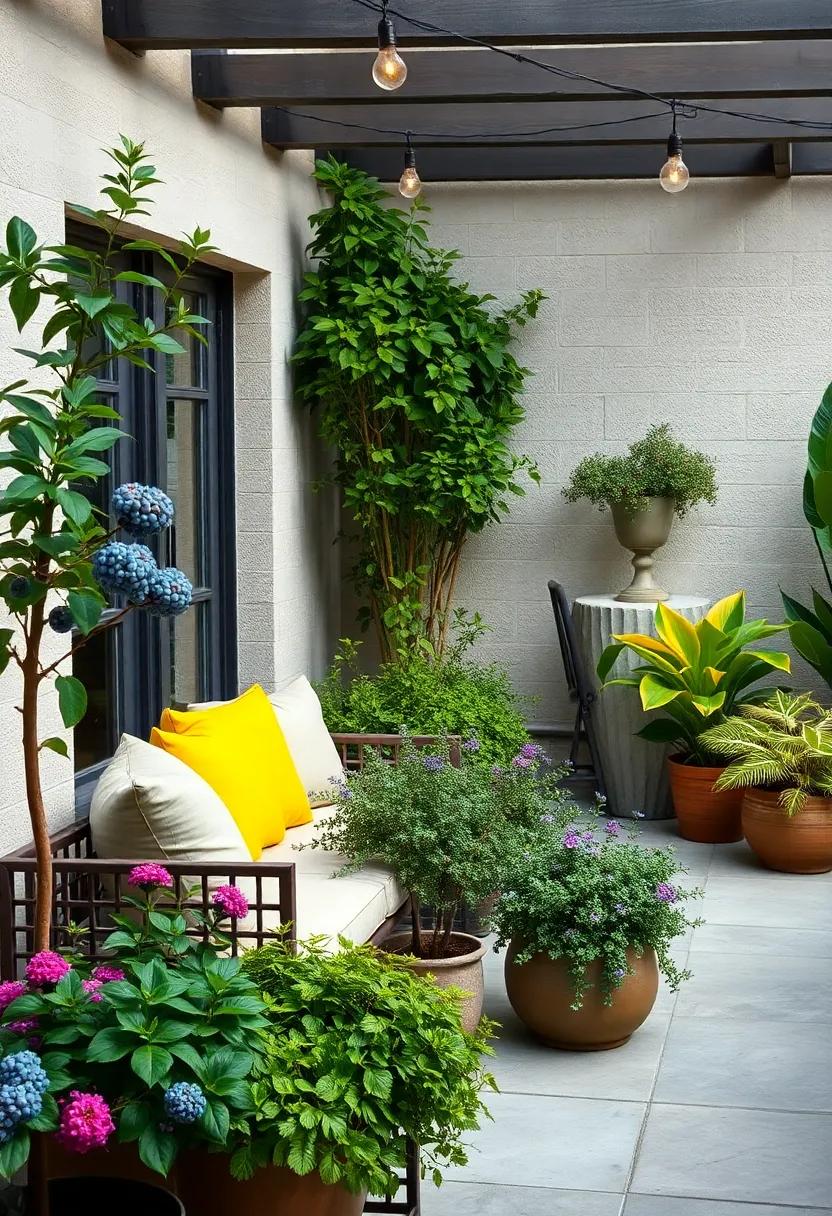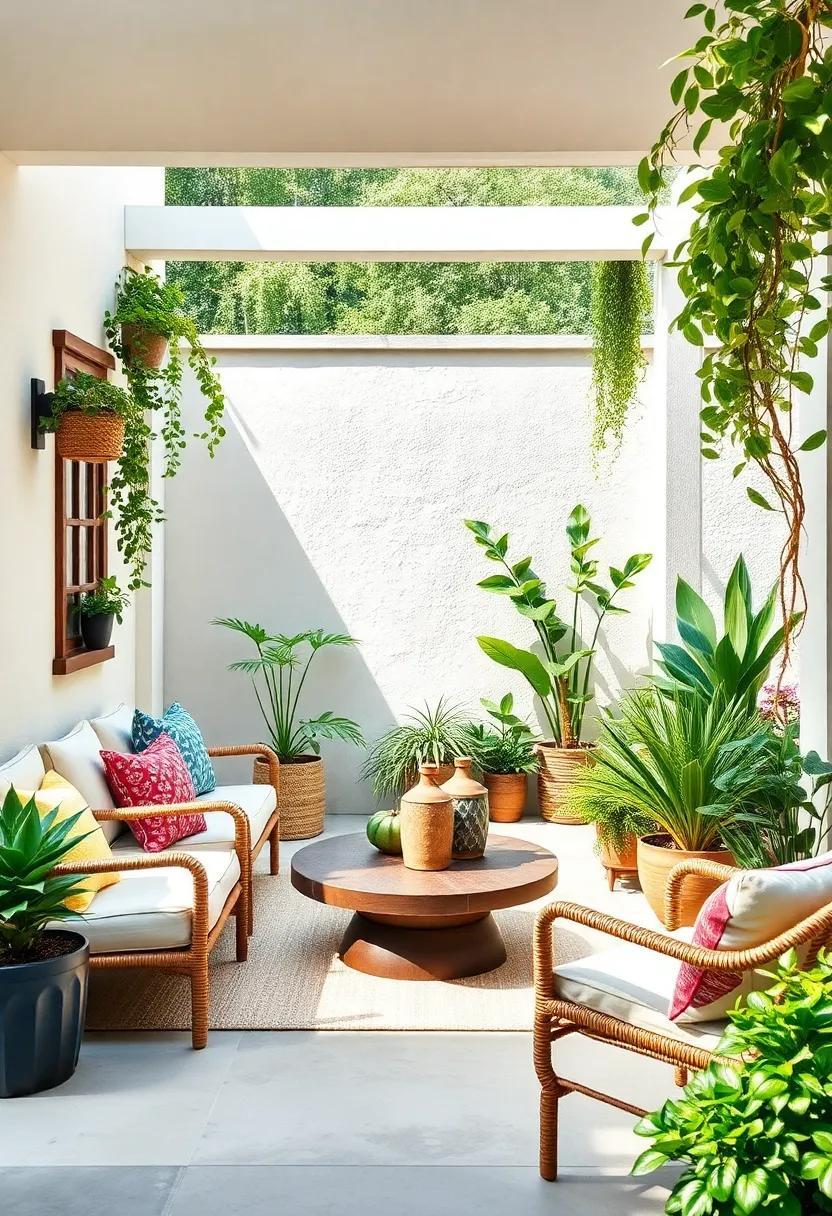
25 Must-Have Patio Plants to Create Your Own Delicious Edible Garden Oasis
Transforming your patio into a lush, edible garden oasis is easier than you think-and more rewarding than you ever imagined. whether you have a sprawling backyard or a cozy balcony, the right selection of plants can turn any outdoor space into a vibrant haven filled with fresh flavors and delightful aromas. in this listicle, we’ll explore 25 must-have patio plants that not only thrive in containers but also bring a tantalizing variety of fruits, herbs, and vegetables right to your fingertips. From sun-kissed tomatoes to fragrant basil and juicy berries,get ready to discover which plants will elevate your outdoor dining experience while adding a touch of natural beauty to your home. Dive in and start planning your delicious, green retreat today!
basil - A fragrant herb perfect for fresh salads, pesto, and garnishing any dish, basil thrives in sunny patio spots
Basil bursts with an inviting aroma that instantly elevates any culinary creation. Whether you’re tossing it into fresh garden salads or blending it into a vibrant, homemade pesto, its sweet, peppery notes add a delightful depth of flavor. This herb is exceptionally versatile – use it as a lively garnish on soups, pastas, and even cocktails for an unexpected pop of freshness. To keep basil thriving, position it in a sunny patio nook were it receives at least 6 hours of sunlight daily. Well-drained soil and regular pruning encourage lush growth and prevent the plant from flowering too soon, ensuring a steady supply of soft, green leaves perfect for picking.
Maximize your basil harvest with thes simple tips:
- Water deeply but less frequently to develop strong roots.
- Pinch off flower buds to promote leaf growth.
- Harvest regularly by snipping leaves early in the morning when oils are most potent.
- Pair basil strategically with tomatoes and peppers in container gardens to enhance growth and flavor synergy.
| Lighting | Watering | Pruning | Harvest Time |
|---|---|---|---|
| 6+ hrs/day (full sun) | Moderate, keep soil moist | Pinch frequently | Morning, before flowering |
Cherry Tomatoes – These bite-sized jewels burst with sweetness and add vibrant color to your edible garden
Bursting with flavor and charm, cherry tomatoes are a staple for any edible garden enthusiast. Their compact size makes them ideal for patio containers, hanging baskets, or small raised beds. These bite-sized gems range in color from classic bright red to sunny yellow and deep purple, offering a spectrum of hues that brighten up your green space. Not only do they bring visual delight,but their sweetness intensifies under the sun,rewarding gardeners with juicy pops of flavor in every bite.
Beyond their irresistible taste and vibrant palette, cherry tomatoes are remarkably easy to cultivate. They thrive in well-drained soil with consistent watering and benefit from midday sun exposure. Whether tossed fresh into salads, skewered for grilling, or simply snacked on straight from the vine, their versatility is unmatched. Here’s a quick glance at what makes them the perfect patio plant:
| Feature | Benefit |
|---|---|
| Compact Growth | Fits perfectly in small containers or vertical planters |
| Color Variety | Adds aesthetic appeal alongside delicious harvests |
| High Yield | Produces abundantly throughout the growing season |
| Low Maintenance | Requires minimal care, ideal for beginners |
Rosemary - With its woody fragrance and versatile culinary uses, rosemary is a hardy companion for any patio planter
Rosemary offers more than just an aromatic boost to your patio-it brings a rugged resilience that thrives in container gardens with minimal fuss. Its needle-like leaves emit a captivating woody scent that can instantly elevate the ambiance of any outdoor nook. Whether nestled in sunshine or enjoying dappled shade, this evergreen herb withstands drought and occasional neglect, making it a perfect match for busy gardeners. Plus, its upright growth habit adds structured greenery, lending an evergreen backbone to your edible ensemble.
Culinary adventurers will delight in rosemary’s ability to infuse flavor into a variety of dishes. Use fresh sprigs to season roasted vegetables, grilled meats, or homemade focaccia, or dry the leaves to create your own herb blends for year-round cooking.Beyond the kitchen, its fragrant oils and vibrant presence invite pollinators, supporting a lively garden ecosystem. Consider these key points for thriving rosemary on your patio:
- Sunlight: At least 6 hours of direct sun daily
- Soil: Well-draining, sandy or loamy mix
- Watering: Allow soil to dry out between watering sessions
- Pruning: Regular snips encourage bushy growth and extends plant health
Strawberries – Juicy and bright, strawberries bring both sweetness and charm to your garden space
Bright red and bursting with flavor,these petite berries are a gardener’s best friend when it comes to blending beauty and bounty. Their vibrant hue not only adds a splash of color but also lures beneficial pollinators, turning your patio into a lively ecosystem. Perfect for containers or hanging baskets, strawberries require minimal space and reward you with a steady harvest throughout the growing season.Their lush green leaves provide a delicate ground cover, creating a natural and attractive mulch that keeps moisture in and weeds at bay.
When planning your strawberry oasis, consider the following care essentials for maximum yield and sweetness:
- Sunlight: At least 6 hours of direct sun daily to encourage juicy fruit development.
- Soil: Well-draining, rich in organic matter for vibrant growth.
- Watering: Consistent moisture but avoid waterlogging to prevent root rot.
- fertilization: balanced, slow-release fertilizer every 4-6 weeks supports healthy production.
| Variety | Flavor Profile | Ideal Container Size |
|---|---|---|
| Albion | Sweet with a slight tartness | 12-16 inches |
| Seascape | Rich and juicy | 10-14 inches |
| Sweet Charlie | Extra sweet and fragrant | 8-12 inches |
Mint – Refreshing and robust, mint is perfect for teas, cocktails, and desserts, but keep it contained to prevent spreading
Mint offers an invigorating burst of freshness that elevates everything from a simple cup of tea to a refined mojito. Its aromatic leaves release a cool,sweet flavor that pairs beautifully with both sweet and savory dishes. Whether you’re infusing water, garnishing desserts, or muddling it into cocktails, fresh mint leaves provide an unmistakable zing that brightens your edible garden experience. beyond flavor, mint’s vibrant green foliage adds a lush pop of color, making it a charming companion for any patio planter.
However, mint is a voracious grower and can quickly take over garden spaces if left unchecked. To keep your edible oasis balanced, it’s wise to plant mint in a contained pot or use root barriers to prevent it from spreading aggressively. Regular trimming not only controls growth but encourages bushier, healthier plants. With proper management, mint becomes a sustainable and delightful staple, ready to enhance your culinary adventures whenever inspiration strikes.
Lavender – Beyond its calming scent, lavender’s edible flowers add a subtle floral flair to baked goods and drinks
Lavender isn’t just a feast for the senses through its signature soothing aroma; it also brings a unique touch of elegance to your culinary creations. The delicate, edible flowers can be sprinkled on top of sugar cookies, infused into lemonades, or even stirred into cocktails to add a whisper of floral complexity. Their subtle sweetness pairs beautifully with honey, vanilla, and citrus, making lavender a versatile botanical ingredient for your patio garden culinary experiments.
For those who like a bit of creativity in the kitchen, incorporating lavender blooms can transform everyday recipes into something extraordinary. From garnishing summer salads to flavoring homemade syrups, this plant is a natural way to elevate flavors. Here’s a quick guide to best uses of edible lavender in your edible oasis:
- lavender shortbread cookies and scones
- Herbal teas and infused waters
- Floral lemonade and iced cocktails
- Lavender honey glaze for roasted vegetables
Thyme – This low-growing herb offers a peppery flavor that enhances meats, soups, and stews effortlessly
Thyme is a versatile, aromatic herb that thrives in compact spaces, making it perfect for patios and container gardens. Its tiny, vibrant green leaves pack a punch of flavor that can transform simple dishes into culinary delights. Whether you’re seasoning roasted meats, enriching hearty soups, or adding depth to slow-cooked stews, thyme’s subtle peppery notes elevate every bite without overpowering. Plus, its low-growing habit creates a lush, fragrant ground cover that softens the edges of flower pots and adds visual interest to your edible oasis.
Beyond its flavor, thyme is exceptionally easy to grow and maintain. It prefers full sun and well-drained soil, making it drought-tolerant-ideal for sunny patio spots. To help you maximize thyme’s potential, here’s a quick guide to different thyme varieties perfect for your garden:
| Variety | Flavor Profile | Best Uses |
|---|---|---|
| Common Thyme | Classic peppery | Meats, stews |
| Lemon Thyme | Citrusy and bright | Seafood, salads |
| French Thyme | Strong, herbal | Soups, sauces |
| Caraway Thyme | Spicy, earthy | Breads, roasts |
Chives - Their mild onion flavor and delicate purple flowers make chives a beautiful and useful addition to your patio garden
Chives are the ultimate multitaskers in any patio garden, offering a subtle, onion-like zest that enhances everything from salads to soups. Their slender green stalks lend a fresh crunch, while their soft purple blossoms add an unexpected pop of color that’s as edible as it is indeed eye-catching. Easy to cultivate in pots or garden beds, chives thrive with minimal care, making them ideal for beginners and seasoned gardeners alike.Plus, their delicate flavor rarely overpowers dishes, allowing them to complement a wide range of cuisines effortlessly.
Beyond their culinary charm,chives attract beneficial pollinators,inviting bees and butterflies to your garden oasis. Their natural pest-repellent qualities can safeguard neighboring plants,promoting a healthier kitchen garden ecosystem. Here’s a quick guide to chive care to get you started:
| Aspect | Details |
|---|---|
| Sunlight | Full to partial sun |
| Water | Keep soil moist but well-drained |
| Soil | Rich, fertile soil with good drainage |
| Harvest Tips | Snip leaves close to the base; flowers edible too |
Peppers – From sweet bell varieties to fiery chilies, peppers bring color and spice to your edible oasis
Infuse your patio garden with vibrant hues and tantalizing flavors by incorporating an array of pepper plants. From the plump, glossy bells that burst with sweetness to the slender, fiery chilies that ignite your senses, peppers offer a palette of colors ranging from deep greens and bright yellows to blazing reds and purples. Their compact growth habit makes them perfect for container gardening, while their versatility in cooking ensures that every harvest turns into a culinary adventure.Imagine snipping fresh slices of crisp bell peppers for a summer salad or drying fiery cayennes to spice up your homemade sauce-peppers elevate your edible oasis beyond ordinary greens.
For a simple guide to choosing the right peppers for your space and taste, consult the quick comparison below:
| Variety | Flavor Profile | Heat Level (Scoville) | Ideal Use |
|---|---|---|---|
| California Wonder | Sweet, crisp | 0 | Salads, roasting |
| Jalapeño | medium heat, smoky | 3,500-8,000 | Salsas, pickling |
| habanero | Fruity, intense heat | 100,000-350,000 | Sauces, marinades |
| Banana Pepper | Mild, tangy | 0-500 | Stuffing, sandwiches |
- Tip: Grow mixed varieties side by side for a spectrum of color and heat in your kitchen garden.
- Maintenance: Peppers thrive in full sun with well-drained soil-perfect for sunny patios.
- Harvest: Regular picking encourages more blooms and more delicious fruits.
Lettuce - Quick-growing and varied in leaf texture and color, lettuce is a staple for fresh, homegrown salads
Lettuce is a garden essential for anyone eager to harvest fresh, crispy greens with minimal fuss. Its rapid growth cycle means you can enjoy multiple harvests throughout the season,turning your patio into a verdant salad bar. From buttery Butterhead to the crisp crunch of Romaine, lettuce offers a stunning variety in leaf shapes and shades-from deep, ruby reds to vibrant, lime greens. This makes it not only a nutritious addition to your edible oasis but also a charming visual feature paired with other herbs and veggies.
When cultivating lettuce on your patio, ensure it gets partial sun to prevent bitterness and water regularly to keep the soil moist but not soggy. Below is a handy guide to some popular lettuce varieties perfect for container growing:
| Variety | Leaf Texture | Color | Harvest Time |
|---|---|---|---|
| Butterhead | Soft, tender | Light green | 45 days |
| Romaine | Crisp, sturdy | Deep green | 60 days |
| Red Leaf | Delicate, ruffled | Red-tinged green | 40 days |
| Little Gem | Crunchy, compact | Bright green | 55 days |
- Ideal for mixed salad bowls and sandwiches.
- Perfect for succession planting to keep fresh leaves coming.
- Thrives in cooler temperatures, making it a great spring or fall option.
Oregano - A staple in Mediterranean dishes, oregano thrives in sunny, well-drained containers
Oregano is more than just a fragrant herb; it’s the heart of many Mediterranean recipes,infusing dishes with its warm,slightly peppery flavor. Perfect for your patio garden, this resilient plant flourishes under the sun and prefers containers that offer excellent drainage. Whether nestled in terra cotta pots or sleek ceramic planters, oregano’s woody stems and lush green leaves bring both vibrancy and fragrance to your small outdoor space. Its low-maintenance nature means frequent pruning not only encourages fresh growth but also intensifies its aromatic oils, making it a flavorful companion for pizzas, pastas, and grilled vegetables.
When growing oregano, consider the following care tips to get the best harvest:
- Sunlight: needs at least 6-8 hours of direct sun daily.
- Watering: Water sparingly; allow soil to dry between sessions.
- Soil: Preferably sandy or loamy soil with good drainage.
- Harvesting: Snip leaves regularly to promote bushier growth.
| Growth Benefit | Result |
|---|---|
| Full Sun Exposure | Abundant, robust flavor |
| Pruning | Denser foliage, continuous harvest |
| Well-Drained Soil | Healthy roots, fewer diseases |
Kale - Hardy and nutrient-rich, kale makes an excellent leafy green that grows well in pots
kale stands out as a superstar in container gardening, offering a bounty of health benefits and robust flavor right from your patio. Its sturdy leaves withstand cooler temperatures and occasional neglect, making it a reliable choice for both beginners and seasoned gardeners alike. Whether you’re aiming to toss it fresh into salads or blend it into hearty smoothies, kale’s vibrant green foliage adds a touch of vigor and nutrition to your edible garden. Plus, its compact growth habit means you can enjoy multiple harvests all season long without needing a sprawling garden bed.
Growing kale in pots also invites versatility in placement and style. Use them to create a vertical green wall or cluster a few pots to craft a dynamic, leafy centerpiece. To thrive, kale prefers:
- Well-draining soil rich in organic matter
- At least 4-6 hours of sunlight daily
- Consistent moisture without waterlogging
With proper care, your potted kale can yield a continuous supply of tender leaves and add an ornamental touch with its curlicue, deep green foliage that’s as attractive as it is edible.
Cilantro – With its distinctive flavor essential to many cuisines, cilantro prefers cooler weather and partial shade on your patio
Cilantro is a vibrant herb that brings a bright, citrusy zing to salsas, salads, and countless global dishes. Its unique flavor is a cornerstone in Latin American, Indian, and Southeast Asian cooking, making it a versatile must-have in any herb garden. Thriving in cooler temperatures, cilantro naturally prefers the balance of partial shade, especially on sunny patios where too much direct light can cause it to bolt quickly.providing dappled sunlight and consistent moisture helps extend its growing season and keeps those feathery green leaves tender and flavorful.
Beyond its culinary benefits, cilantro offers quick growth and dense foliage, which can act as a natural pest deterrent, protecting neighboring plants. For best results, sow cilantro seeds directly into well-drained patio containers or raised beds. Regular harvesting-pinching off leaves and harvesting stems early in the morning-encourages bushier growth and a continual supply of fresh herb. Here’s a simple care guide to keep your cilantro thriving:
| care Aspect | Tip |
|---|---|
| light | Partial shade, 3-4 hours of morning sun |
| Water | Keep soil consistently moist but not waterlogged |
| Temperature | Ideal 50°F-75°F (10°C-24°C) |
| Harvest | Pinch leaves regularly to promote growth |
Green Beans – Climbing varieties can brighten vertical spaces while producing tasty pods
Transform your patio into a vibrant vertical garden by introducing climbing green beans, a perfect blend of beauty and bounty.These vigorous vines provide more than just a fresh harvest; their lush greenery and twisting tendrils add a dynamic architectural element to any space. Whether growing on trellises, obelisks, or simple strings, they maximize vertical space, making them ideal for compact patios. Plus, watching delicate white or purple blooms give way to slender, flavorful pods offers a rewarding gardening experience.
Why choose climbing green beans for your patio?
- Space-efficient: Utilize height instead of ground space.
- Easy to harvest: Pods hang at eye level for quick picking.
- Quick growth: Vigorous vines provide a fast green screen.
- Flavorful yields: Fresh, tender beans perfect for diverse recipes.
| Variety | Growth Habit | Days to Harvest | Flavor Profile |
|---|---|---|---|
| Kentucky Wonder | robust climber | 60-70 | Classic, tender, slightly sweet |
| Scarlet Runner | Vibrant vine | 65-75 | Rich, slightly nutty |
| Blue Lake | Compact climber | 55-65 | Sweet, crisp |
Dill – Fragrant and feathery, dill pairs wonderfully with fish dishes and pickling projects
Dill’s light, airy fronds not only add a burst of fresh, anise-like flavor but also bring a lovely visual texture to any edible garden. This versatile herb thrives in containers and loves sunny spots, making it perfect for patios and balconies. Beyond its culinary charms, dill is a magnet for beneficial insects, including ladybugs and hoverflies, which can definitely help keep pest populations at bay naturally. Whether sprinkled fresh over smoked salmon, whisked into homemade tartar sauce, or tucked into jars for that iconic tangy dill pickle, this herb elevates your dishes effortlessly.
For gardeners seeking an ongoing harvest, dill’s rapid growth cycle means you’ll be snipping fresh sprigs in no time. Pair it with companion plants like cucumbers and cabbage to maximize your garden’s productivity and flavor harmony. Below is a quick guide to dill’s care and culinary uses:
| Aspect | Details |
|---|---|
| Sunlight | Full sun (6+ hours daily) |
| Watering | Keep soil moist but well-drained |
| Harvest Time | Leaves ready in 40-60 days |
| Top Culinary Uses | Fish dishes, pickles, salads, sauces |
Eggplant – Compact varieties adapt well to container growth, offering beautiful purple fruits for roasting and grilling
For gardeners with limited space, selecting compact eggplant varieties can transform any patio into a vibrant culinary hotspot. These smaller cultivars thrive in containers, making them ideal for balconies, terraces, or cozy garden nooks. Not only do they produce stunning, glossy purple fruits that elevate your dish presentation, but their manageable size also ensures they won’t overwhelm your growing area. pairing well with cherry tomatoes or fresh basil, eggplants grown in pots bring versatility to your edible garden, ready for roasting, grilling, or turning into a savory dip.
Key benefits of container-friendly eggplants:
- Space-efficient growth: Perfect for patios and small decks.
- visual appeal: Striking deep-purple fruits add color and texture.
- Easy maintenance: Controlled watering and soil enhance flavor development.
- Year-round potential: Containers can be moved to extend growing season.
Sage - Its earthy flavor enhances roasted dishes, and its silvery leaves add texture to your garden
Sage is a versatile herb that brings a subtle earthiness to your culinary creations. Its robust, slightly peppery flavor pairs exceptionally well with hearty roasted meats, root vegetables, and even savory breads. Incorporate fresh leaves into your cooking or dry them for long-term use-either way,sage infuses dishes with a depth that elevates simple recipes to gourmet levels. It’s a staple for fall and winter menus but can brighten up your garden-inspired summer dishes as well.
Beyond the kitchen, sage adds a striking visual and tactile element to your patio greenery. Its soft, silvery foliage contrasts beautifully with the lush greens and vibrant blooms of other edible plants. Sage thrives in well-drained soil under full sun, making it ideal for container gardens or raised beds on your patio.Whether you tuck it between tomatoes or let it stand tall alongside lavender, sage enriches your garden’s texture and aroma.
arugula – Spicy and peppery, this leafy green grows quickly and adds zing to salads and sandwiches
For those craving a bit of spice in their greens, this vibrant leaf brings a delightful kick without overwhelming your palate. Its naturally peppery flavor perfectly complements crisp salads, juicy sandwiches, and even delicate pestos. Thanks to its lightning-fast growth, you can enjoy multiple harvests throughout the season, making it an ideal choice for balcony boxes and patio planters alike. Plus, its feathery, dark-green leaves add a touch of wild elegance to your edible garden.
Growing tips to keep your spicy leaf thriving:
- Plant in well-drained soil with full to partial sunlight.
- Water consistently but avoid waterlogged roots.
- Snip outer leaves regularly to encourage new growth.
- Use as a fresh garnish or mix into warm dishes for a subtle zing.
| Attribute | Details |
|---|---|
| Days to Harvest | 20-30 days |
| Sunlight | 4-6 hours daily |
| Watering | Moderate,keep soil moist |
| Flavor profile | Spicy,peppery |
Lemon Balm – With a mild lemon scent,this herb is perfect for teas and freshening drinks
Lemon balm is a versatile addition to any patio garden, offering a subtle citrus fragrance that elevates your outdoor culinary experience. Its bright, fresh aroma complements herbal teas, making it a delightful ingredient to steep on cool evenings or warm afternoons. Beyond teas, lemon balm leaves can be torn and dropped into water, sparkling beverages, or homemade lemonade, infusing them with a gentle lemony zest that refreshes the palate without overpowering other flavors.
This hardy herb is not only a sensory delight but also incredibly easy to cultivate, thriving in pots or garden beds with minimal care. Its fast-growing nature provides a steady supply of vibrant green leaves throughout the growing season. Incorporate lemon balm into your edible garden to enjoy:
- Natural mood-enhancing properties, making it perfect for calming summer drinks
- Attractive foliage that doubles as a fragrant companion plant
- Leaves that can be frozen or dried, preserving their mild citrus character year-round
Nasturtiums – Edible flowers and leaves with a peppery taste, plus they attract pollinators to your garden
Nasturtiums are a vibrant addition to any patio garden, boasting both striking colors and culinary versatility. Their bright orange, red, and yellow blossoms are not only a feast for the eyes but also bring a lively, peppery zing to salads, sandwiches, and garnishes. Don’t overlook the leaves-equally edible with a slightly spicy kick, they add texture and flavor to your dishes while being incredibly easy to grow in pots or hanging baskets. Plus, nasturtiums are famously low-maintenance, thriving in poor soil and requiring minimal water, making them perfect for the busy home gardener looking to add fresh flavor to their meals.
Beyond the kitchen, these flowers serve an ecological purpose by attracting beneficial pollinators like bees and butterflies, which can dramatically improve the productivity of your entire edible garden. Their natural pest-repellent properties also make them excellent companion plants, warding off aphids and whiteflies from nearby vegetables and herbs. Whether tossed fresh into your culinary creations or simply enjoyed for their garden-friendly benefits, nasturtiums are a dual-purpose delight that deserves a spot on every edible patio.
Radishes – Fast-growing and crisp, radishes add a pop of color and crunch to your edible mix
Radishes are the ultimate quick-win for any patio gardener craving instant gratification. Within just a few weeks, you’ll see these vibrant, bite-sized jewels flourish, adding not only a splash of fiery red or pristine white but also a satisfyingly crisp texture to your salads and snacks. Their peppery zing effortlessly elevates simple dishes,while their leaves,often overlooked,make a tender,peppery addition to sautéed greens or pestos.
Here’s why radishes deserve a spot in your edible garden:
- Superfast harvest: Mature in as little as 3 weeks, perfect for successive planting cycles.
- Space-savvy: Compact roots excel in shallow patio containers and hanging baskets.
- Visual delight: Their bulb colors range from bright pinks and deep purples to creamy white, adding garden palette variety.
- Low maintenance: hardy against pests, they thrive with minimal fuss outdoors or in direct sunlight.
| Variety | Days to Harvest | Flavor Profile |
|---|---|---|
| Cherry Belle | 22 | Mild & Crisp |
| French Breakfast | 25 | Sweet & Peppery |
| Black spanish | 30 | Earthy & Robust |
Parsley – Versatile and nutrient-dense, parsley is a must-have herb for seasoning and garnishing
Parsley is much more than a simple garnish; it’s a powerhouse of flavor and nutrition that complements a wide array of dishes. Whether you’re chopping it fresh into vibrant salads, sprinkling it over roasted vegetables, or blending it into zesty sauces, this herb brings a bright, peppery freshness that elevates every bite. Growing parsley on your patio is not only rewarding but also ensures a continuous supply of crisp, aromatic leaves ready to transform your cooking with minimal effort.
Nutritionally, parsley stands out with its extraordinary vitamin and mineral profile. Rich in vitamins A, C, and K, it supports immune health, skin vitality, and bone strength. Plus, its natural compounds lend antioxidant and anti-inflammatory benefits. here’s a quick glance at why parsley deserves a spot in your edible garden:
| Benefit | Details |
|---|---|
| Vitamin C | Boosts immunity and collagen production |
| Vitamin K | Essential for blood clotting and bone health |
| Antioxidants | Protects cells from damage, reduces inflammation |
- Thrives in containers with well-drained soil
- Requires partial sunlight for optimal growth
- Can be harvested multiple times for year-round use
Spinach - Shade-tolerant and packed with vitamins, spinach thrives in cooler patio corners
Spinach is a versatile green that effortlessly adapts to patio spaces with limited sunlight. Perfect for cooler spots shielded from the blazing afternoon sun, it brings lush, deep-green foliage that not only brightens up shaded corners but also packs a powerful nutritional punch. This leafy green is rich in iron, vitamins A and C, and antioxidants, making it a superstar in any edible garden. Its tender leaves are ideal for fresh salads, smoothies, or sautéed dishes, offering both flavor and health benefits year-round.
Growing spinach on your patio is surprisingly easy,especially if you keep these tips in mind:
- Soil: Use well-draining,fertile soil enriched with organic matter.
- Watering: Keep the soil consistently moist but avoid waterlogging.
- Harvest: Snip outer leaves regularly to encourage continuous growth.
| Spinach Variety | Days to Harvest | Flavor Profile |
|---|---|---|
| bloomsdale | 45 | Rich & earthy |
| Baby leaf | 30 | Tender & mild |
| Matador | 35 | Sweet & robust |
fennel – Its anise flavor enhances many dishes, and the bulbs can be harvested for salads and roasting
Fennel is a versatile herbaceous plant that brings a subtle, sweet anise flavor to your patio garden and kitchen. Its crunchy bulbs are not only visually appealing but also a culinary treasure, perfect for adding a delicate licorice note to salads, gratins, and roasted vegetable medleys. growing fennel is a rewarding experience as it thrives in containers and moderate sunlight, making it ideal for patio gardening. The feathery fronds can be snipped to garnish dishes or brewed into soothing teas, ensuring nothing goes to waste.
Beyond its taste, fennel offers a nutritional boost rich in fiber, vitamin C, and antioxidants, making it a smart choice for health-conscious gardeners. Here’s a quick glance at some tasty uses and tips for harvesting:
| Fennel Part | Use | Harvest Time |
|---|---|---|
| Bulb | Chopped in salads, roasted, grilled | Late summer to early fall |
| Fronds | Garnish, herbal tea | Throughout growing season |
| Seeds | Spice blends, digestive aid | After flowering |
Blueberries – compact shrubs that provide antioxidants and a splash of vibrant blue to your edible space
Blueberries are an exceptional choice for patio gardens, especially when space is at a premium. Their compact growth habit allows them to thrive in containers or small beds,making them perfect for balconies,terraces,and cozy backyard corners. Beyond their attractive foliage and delicate white blossoms in spring, these shrubs burst into vibrant blue berries that pack a flavorful punch. Rich in antioxidants,vitamins,and fiber,blueberries not only elevate your garden’s aesthetic but also boast impressive health benefits,making every handful a nutritious treat right at your fingertips.
To ensure your blueberry bushes flourish, focus on acidic soil with a pH between 4.5 and 5.5, and provide ample sunlight-ideally 6 to 8 hours daily. Regular watering and mulching help maintain moisture and soil acidity, creating the perfect environment for bountiful harvests.Whether enjoyed fresh, blended into smoothies, or baked into desserts, blueberries transform your edible space into a vibrant sanctuary of flavor and wellness.
| Key Care Tips | benefit |
|---|---|
| Acidic soil (pH 4.5-5.5) | Optimal nutrient uptake |
| 6-8 hrs sunlight | Maximized berry production |
| Consistent watering | Prevents drought stress |
| Mulching | Maintains soil moisture & temperature |
In Conclusion
With these 25 must-have patio plants, your outdoor space is ready to transform into a thriving edible oasis.From fragrant herbs to vibrant fruits and crisp vegetables, each plant not only adds beauty but also brings fresh flavors right to your fingertips. Whether you have a sprawling garden or a cozy balcony, these selections make growing your own delicious harvest both achievable and enjoyable.So, roll up your sleeves, get planting, and savor the satisfaction that comes with nurturing nature-one bite at a time.
As an Amazon Associate I earn from qualifying purchases.
